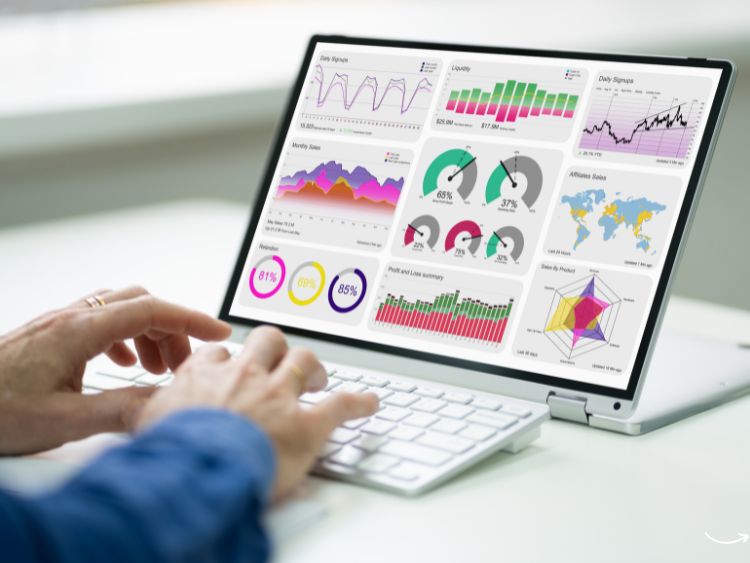In today’s fast-paced business world, staying ahead of the curve is more critical than ever. That’s where business analytics intelligence comes into play. By leveraging data, businesses can gain valuable insights that drive decision-making and strategic planning. But what exactly is business analytics, and why is it so important? Let’s dive in and explore this fascinating field, uncovering how it can transform your business operations and give you a competitive edge.
What is Business Analytics Intelligence?
Business analytics intelligence refers to the process of collecting, analyzing, and interpreting data to inform business decisions. It combines techniques from data analytics, business intelligence, and statistical analysis to provide actionable insights. By leveraging these insights, companies can make informed decisions, improve efficiency, and drive growth.
The Importance of Business Analytics Intelligence
So, why should businesses invest in business analytics? Here are some key reasons:
- Improved Decision-Making: By analyzing data, businesses can make more informed decisions. This can lead to better outcomes and increased profitability.
- Enhanced Efficiency: Business analytics intelligence helps identify inefficiencies and areas for improvement, enabling companies to streamline operations and reduce costs.
- Competitive Advantage: Companies that effectively use data can gain a competitive edge by staying ahead of market trends and customer needs.
- Risk Management: Analytics can help identify potential risks and develop strategies to mitigate them, ensuring business continuity.
Key Components of Business Analytics Intelligence
Understanding the key components of business analytics intelligence is essential for its effective implementation. These components include:
1. Data Collection
Data collection is the foundation of business analytics intelligence. It involves gathering data from various sources, such as customer interactions, sales transactions, and social media activity. This data can be structured (e.g., databases) or unstructured (e.g., text, images).
2. Data Analysis
Once data is collected, it needs to be analyzed to extract meaningful insights. This involves using statistical and analytical tools to identify patterns, trends, and correlations within the data.
3. Data Visualization
Data visualization is the process of presenting data in a graphical or visual format. This makes it easier for decision-makers to understand complex data and identify key insights quickly.
4. Reporting and Dashboards
Reporting and dashboards are tools used to communicate the findings of data analysis. They provide a comprehensive view of key metrics and performance indicators, helping businesses monitor progress and make informed decisions.
5. Predictive Analytics
Predictive analytics uses historical data to predict future outcomes. This can help businesses anticipate trends, identify opportunities, and make proactive decisions.
How to Implement Business Analytics Intelligence
Implementing business analytics intelligence can seem daunting, but with the right approach, it can be a smooth and rewarding process. Here are some steps to get started:
1. Define Your Goals
Start by identifying what you want to achieve with business analytics. Are you looking to improve sales, enhance customer satisfaction, or streamline operations? Clear goals will guide your data collection and analysis efforts.
2. Choose the Right Tools
There are numerous tools available for business analytics intelligence, from data visualization software like Tableau to predictive analytics platforms like IBM Watson. Choose tools that align with your goals and budget.
3. Collect and Clean Data
Data quality is crucial for accurate analysis. Ensure your data is clean, accurate, and relevant. This may involve data cleansing processes such as removing duplicates, correcting errors, and standardizing formats.
4. Analyze and Interpret Data
Use analytical tools to examine your data and extract insights. Look for patterns, trends, and correlations that can inform your business decisions.
5. Communicate Findings
Present your findings in a clear and concise manner using reports and dashboards. Ensure decision-makers understand the insights and their implications for the business.
6. Take Action
Use the insights gained from your analysis to inform business decisions and drive strategic initiatives. Monitor progress and adjust your approach as needed to achieve your goals.
Real-World Applications of Business Analytics Intelligence
Business analytics intelligence is used across various industries to drive success. Here are some examples:
Retail
Retailers use business analytics intelligence to optimize inventory management, improve customer experience, and increase sales. By analyzing customer data, they can identify purchasing patterns and tailor marketing efforts to individual preferences.
Healthcare
In the healthcare industry, analytics is used to improve patient outcomes, streamline operations, and reduce costs. For example, predictive analytics can help identify patients at risk of certain conditions, enabling early intervention and better treatment outcomes.
Finance
Financial institutions use analytics to detect fraud, manage risk, and optimize investment strategies. By analyzing transaction data, they can identify suspicious activity and take preventive measures.
Manufacturing
Manufacturers leverage analytics to enhance production efficiency, reduce downtime, and improve product quality. Data from sensors and machines is analyzed to identify issues and optimize maintenance schedules.
FAQs
What is the difference between business intelligence and business analytics intelligence?
Business intelligence focuses on descriptive analytics, which involves analyzing historical data to understand what has happened. Business analytics intelligence, on the other hand, includes predictive and prescriptive analytics, which use historical data to predict future outcomes and recommend actions.
How can small businesses benefit from business analytics intelligence?
Small businesses can benefit from business analytics intelligence by making data-driven decisions that improve efficiency, increase sales, and enhance customer satisfaction. Affordable tools and cloud-based solutions make it accessible even for businesses with limited resources.
What skills are needed for a career in business analytics intelligence?
Key skills for a career in business analytics include data analysis, statistical analysis, data visualization, and knowledge of analytical tools and software. Strong problem-solving and communication skills are also essential.
How does business analytics intelligence support decision-making?
Business analytics intelligence supports decision-making by providing insights based on data analysis. This helps decision-makers understand trends, identify opportunities, and make informed decisions that drive business success.
Summary
In conclusion, business analytics intelligence is a powerful tool that can transform how businesses operate. By leveraging data, companies can gain valuable insights that drive decision-making, improve efficiency, and provide a competitive edge. Whether you’re a small business or a large enterprise, investing in business analytics can lead to significant benefits and long-term success.
Authoritative Links
- https://www.tableau.com/learn/articles/business-intelligence
- https://www.ibm.com/analytics/business-analytics
- https://www.sas.com/en_us/insights/analytics/business-analytics.html
- https://www.microsoft.com/en-us/power-bi
- https://www.qlik.com/us/data-analytics
By following these guidelines, you can unlock the full potential of business analytics and drive your business towards greater success. So, what are you waiting for? Dive into the world of data and discover the transformative power of business analytics intelligence today!







